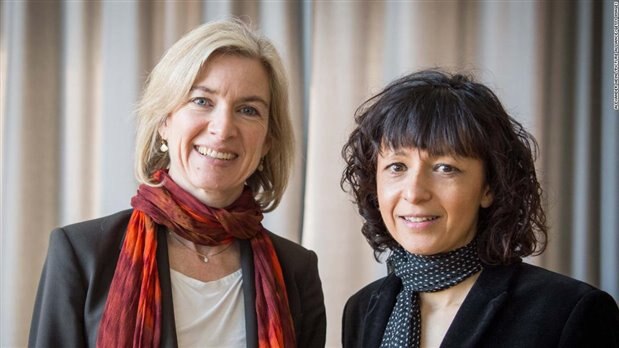Emmanuelle Charpentier and Jennifer A. Doudna have won the Nobel Prize in chemistry for developing CRISPR/Cas9 genetic scissors. The women first published their discovery in 2012. (Image credit: CNN)
Two 2020 Nobel Prize winners have made history. The Nobel Prize in chemistry has been awarded to Emmanuelle Charpentier and Jennifer A. Doudna for the development of a method for genome editing. The pair discovered the groundbreaking CRISPR/Cas9 genetic scissors, which allows researchers to change the DNA of animals, plants, and micro-organisms with extremely high precision. This makes Charpentier, a French microbiologist, and Doudna, an American biochemist, the first women to jointly win the Nobel Prize in Chemistry, and the sixth and seventh women to win the chemistry prize.
Doudna and Charpentier's genome editing technique is based on creating proteins that match the DNA code where a "cut" is going to be made. This allows researchers to insert, repair, or edit a gene in a way that the DNA doesn't see the change as damaged, rather as an edit to be replicated by the cell. The two came up with the technique after Charpentier discovered a previously unknown molecule, tracerRNA, in the bacteria. She figured out it was part of an ancient immune system, CRISPR/Cas, that disarms viruses by cutting their DNA.
"Charpentier published her discover in 2011. The same year, she initiated a collaboration with Jennifer Doudna, an experienced biochemist with vast knowledge of RNA," said the Nobel Prize committee. "Together, they succeeded in recreating the bacteria's genetic scissors in a test tube and simplifying the scissor's molecular components, so they were easier to use."
Since its originally 2012 discovery, the CRISPR/Cas9 has been used in various research fields, such as developing crops that can withstand mold, pests, and drought. Scientists believe the genetic scissors have great potential to create new opportunities for plant breeding and even innovative cancer therapies.
Charpentier said she hoped to send a "positive message to the young girls who would like to follow the path of science and to show them that women in science can also have an impact through the research that they are performing."
Have a story tip? Message me at: cabe(at)element14(dot)com

